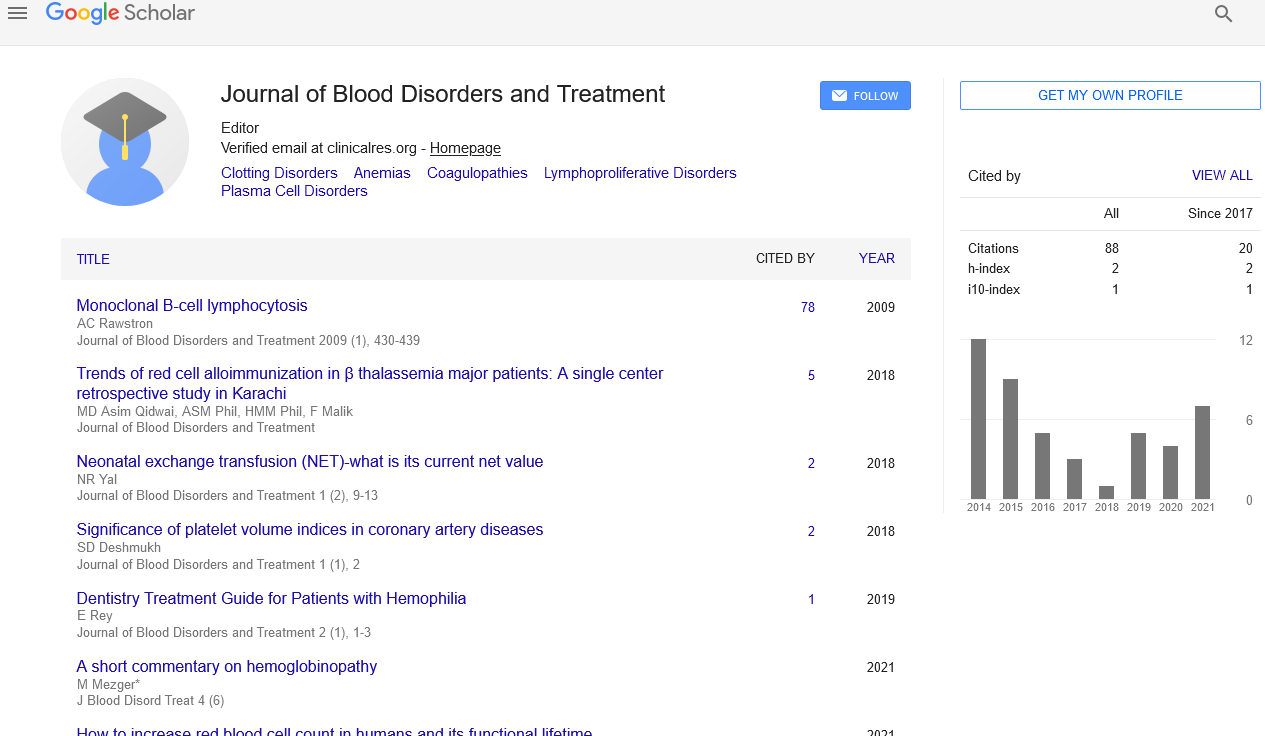Chemotherapy Effect on Neutrophils
Warangal
, India, Email: pavithrapayam123@gmail.comWarangal
, India, Email: pavithrapayam123@gmail.comReceived: 03-Jan-2021 Accepted Date: Feb 16, 2021; Published: 24-Feb-2021
This open-access article is distributed under the terms of the Creative Commons Attribution Non-Commercial License (CC BY-NC) (http://creativecommons.org/licenses/by-nc/4.0/), which permits reuse, distribution and reproduction of the article, provided that the original work is properly cited and the reuse is restricted to noncommercial purposes. For commercial reuse, contact reprints@pulsus.com
Neutropenia may be a blood condition characterized by low levels of neutrophils, which are white blood cells that ensure your body from contaminations. Without sufficient neutrophils, your body can't battle off microscopic organisms. Having neutropenia increments your chance of numerous sorts of disease.
Neutropenia is characterized as an supreme neutrophil check (ANC) of less than 1500 per microliter (1500/microL). Serious neutropenia is characterized as less than 500 per microliter (500/microL).
Neutropenia can be caused by Chemotherapy is one of the foremost common causes of neutropenia. Cancer and other blood and/or bone marrow disarranges Infections, infections including hepatitis, tuberculosis, sepsis, or Lyme disease, Insufficiencies in vitamins or minerals, such as vitamin B12, folate, or copper. Immune system illnesses, counting Crohn's illness, lupus, and rheumatoid joint pain.
Neutropenia is common after accepting chemotherapy and increments your chance for diseases. These cancer-fighting drugs work by killing fast-growing cells within the body—both great and awful. These drugs slaughter cancer cells as well as solid white blood cells.
There are some medications that can result in drug-induced neutropenia. The most common are sulfasalazine carbimazole, clozapine, dapsone, dipyrone, penicillin G methimazole, procainamide, propylthiouracil, rituximab, and ticlopidine.
Neutropenia classified as mild, moderate, or serious, depending on the number of neutrophils in a test of blood.
By numerous measures, the least acceptable limit for grown-ups is almost 1,500 neutrophils per microliter of blood (A few put the cut-off at 1,800 per microliter). The range of neutrophil numbers in mild neutropenia is 1,000-1,500; the number in moderate neutropenia is 500-1,000; and the check in serious neutropenia is less than 500.
Neutropenia can also classified as acute (temporary or short-lasting) or chronic (long-lasting), congenital (a condition one is born with) or acquired (a condition that happens over a period of time).
In grown up, a count of 1,500 neutrophils per microliter of blood or less is considered to be neutropenia, with any count below 500 per microliter of blood regarded as a severe case. In severe cases, even bacteria that are normally present in the skin, mouth, and gut can cause serious infections.
Neutropenia, especially in its initial form, may not have symptoms. If symptoms exist, they could include: Fever, Swelling, Sores, Repeated infections.
Diagnosis, The most common test is a simple blood test known as a complete blood count. In some cases, such as when a certain disease is suspected, the physician might want to test your bone marrow.
A few sorts of neutropenia might require no treatment. In any case, within the case of neutropenia with fever (febrile neutropenia), treatment is fundamental.





